- Home
- Bill Pronzini
Carmody's Run
Carmody's Run Read online
CARMODY’S RUN
By Bill Pronzini
Digital Edition published by Crossroad Press
Copyright © 2013 / Bill Pronzini
LICENSE NOTES
This eBook is licensed for your personal enjoyment only. This eBook may not be re-sold or given away to other people. If you would like to share this book with another person, please purchase an additional copy for each person you share it with. If you’re reading this book and did not purchase it, or it was not purchased for your use only, then you should return to the vendor of your choice and purchase your own copy. Thank you for respecting the hard work of this author.
Meet the Author
Book List
STORY COLLECTIONS:
Carmody’s Run
Case File
More Oddments
Night Freight
Oddments
On Account of Darkness
Problems Solved
Scenarios
Sleuths
Small Felonies
Spadework
Stacked Deck
NON-FICTION:
Gun in Cheek: An Affectionate Guide to the Worst in Mystery Fiction
Son of Gun in Cheek
WESTERNS:
Border Fever
Day of the Moon
Duel at Gold Buttes
Gallows Land
Starvation Camp
DISCOVER CROSSROAD PRESS
Visit our online store
Subscribe to our Newsletter
Visit our DIGITAL and AUDIO book blogs for updates and news.
Connect with us on Facebook.
Join our group at Goodreads.
CARMODY’S RUN
CONTENTS
PREFACE
THE DESPERATE ONES
DEATH WARRANT
BLOOD MONEY
A RUN IN DIAMONDS
PREFACE
ON CARMODY & THE WRITING LIFE
Jack Woodford, the wacky bard of commercial writers, called us “fiction racketeers.” He didn’t mean hacks; he meant prolific professionals who care about their work and attempt to write to the best of their abilities at all times. There’s a damn big difference between being prolific and being a hack, whether the critics and literateurs think so or not, and I’ll be glad to debate the point with holders of the opposing view.
Anyhow, I’ve been one of the racketeers for more than a quarter of a century—twenty-seven years, to be exact. During that time I’ve published seven or eight million words, and lived a great many different lives while I was writing them. Some briefly, some not so briefly. Some concurrently with others. And some I’m still living to this day. There are times when I feel schizophrenic as hell. Like Sybil, except that I’m aware of each of my multiple personalities, good and bad, past and present.
I refer, of course, to the hundreds of fictional characters I’ve created. A clutch have been in my own image, to one degree or another; most haven’t been. All have been interesting, at least to me. (The God game. Writers get off on playing it, too; don’t let any of them tell you otherwise.) A few of my created lives have been so enjoyable to lead that I’ve brought them back for encore performances—so often in one case that the character is better known and more well-liked than I am, and he doesn’t even have a name!
The San Francisco private investigator dubbed the “Nameless Detective” by a former editor, not by me -is certainly my best as well as best known series character, having appeared in twenty novels and three-score short stories since 1967. But he’s not the only one by any means. The rest, brainchildren of the seventies and eighties, have had short public existences -and languished in relative obscurity while they and I were living them.
There was Dan Connell, ex-pilot and reformed smuggler operating in Singapore and Malaysia, featured in a pair of novels, The Jade Figurine and Dead Run, originally published under the pseudonym Jack Foxx. There was Flagg, troubleshooter for a mythical criminal boss in San Francisco, a joint creation with Jeff Wallmann: hero/antihero of four shorts and one novel, Day of the Moon, all published as by William Jeffrey. There was Christopher Steele, magician extraordinary, who specialized in solving impossible crimes—another joint creation, this time with Michael Kurland. There was Fergus O’Hara, a seriocomic 1860s con man, who with his wife Hattie solves a riverboat mystery in another Jack Foxx opus, Freebooty. There was E.L. Oxman, a contemporary New York City police detective; John Lutz and I created him jointly for The Eye, and John subsequently wrote a solo novel featuring Oxman. There was John Quincannon, another historical character who started out as a U.S. Treasury agent in the 1890s and graduated to a partnership with ex-Pinkerton op Sabina Carpenter in a San Francisco “investigative services” agency; he appears in Quincannon, and in a collaboration with Marcia Muller, Beyond the Grave.
And then there was Carmody.
Of all my obscure series characters, I have the softest spot for Carmody, the hardest edged. I’ve long admired the tough, terse Black Mask style and its various noir offshoots, and in the Carmody stories I came closest to capturing that same dark flavor. (Flagg, the Organization troubleshooter, is also a noir-styled character; but he isn’t as fully realized as Carmody, doesn’t have Carmody’s complexity or quite the right dark taste.)
Carmody is not a detective, although like Flagg and my other Obscures, he sometimes functions in that capacity. He is “a free-lance bodyguard, a supplier of legal and extralegal services and material, with connections that reached into nearly every country in the world; he dealt with desperate men and desperate women, with profiteers and black-marketeers, with thieves and smugglers and murderers-on his terms, according to his own brand of ethics; and he thrived on the action, adventure, danger in each of the jobs he undertook.”
His base of operations is the Mediterranean island of Majorca, but his work takes him all over Europe and North Africa, to such places as Algiers, Vienna, Venice, Amsterdam, and Spain’s Costa del Sol. His adventures are just that—adventure stories, with emphasis on action, unusual characters and situations, exotic settings. Man stuff, in other words. Any feminist—my wife, Marcia Muller, being no exception—will no doubt dislike and disapprove of Carmody. So be it. I make no apologies for him or his creation.
He was conceived in 1970, while Majorca was my base of operations. (In case you’re wondering, I went there with a fellow racketeer, Jeff Wallmann, to write a series of erotic novels [I love euphemisms; don’t you?] for an American publisher who was based on the island. For tax purposes–his, not ours. All expenses paid. A hell of a deal for all concerned.) Antiheroes were big that year, and I had been reading and was much impressed by the Parker series by Donald Westlake writing as Richard Stark. Dan J. Marlowe was a good friend and I liked his Earl Drake series too. So why not try an antihero of my own? Not a thief like Parker or a convicted felon turned reluctant government agent like Drake... somebody more edge-of-the-law than outright criminal, a kind of shadow-walker... somebody who operated outside the U.S., in places I myself knew first-hand, had visited or wanted to visit—an antihero version of Stephen Marlowe’s Chet Drum. Enter Carmody.
His debut was in a novelette I called “A Run in Diamonds” and sold to Bruce Cassiday at Popular Publications. The story appeared in the first (December 1970) of the short-lived, digest-size issues of Adventure. With a new title: “The $50,000 Bosom”. Bruce is a fine editor and writer and a nice man but I will never forgive him for that title change. In 1972 I expanded the story into a full-length novel for Pocket Books; it was published the following year under my original title and the pseudonym Alex Saxon. It was supposed to be the first of a series of Carmody novels for Pocket. And others would have followed if my editor hadn’t left shortly after I delivered the manuscript of A Run in Diamond
s. Her replacement had no interest in continuing the series, and subsequent sales of Diamonds weren’t good enough for PB’s bosses to override the new editor’s disinterest.
Carmody did appear in three other short stories published between 1971 and 1975, all in Alfred Hitchcock’s Mystery Magazine. Those three stories are included in these pages. Following publication of the last of them, “Blood Money” (blandly retitled “Free-Lance Operation” by AHMM), I decided to see if I could interest some new and enterprising editor in Carmody as a series book character. I wrote a 50-page portion-and-outline based on “Blood Money” and sent it to my then-agent, who in turn sent it to one hardcover and half a dozen paperback houses. No takers. This type of antihero had had his day, they all said. Carmody wasn’t “hardboiled” enough for the male action-adventure market, the paperback editors said. Meaning he didn’t carry enough firepower or indiscriminately kill enough people; this was the heyday of The Executioner and his ilk, remember. Hell, I thought, they’re probably right. So I retired the portion-and-outline and Carmody along with it, and went on to other pursuits.
I might have considered another Carmody short story at some point, just to keep a hand in, if AHMM hadn’t been bought by Davis Publications in 1975 and its editorial policies somewhat revamped. Noir antihero stories were not any more in favor with the new regime than they were with paperback editors. Not that all was smooth sailing with the old AHMM regime. In fact, a dispute with editor Ernie Hutter was the reason I didn’t write a Carmody story between 1972 and 1975.
Both “The Desperate Ones” and “Death Warrant” (magazine title: “The Web”) were heavily edited, in the latter case so extensively that the published version carried little of my Vienna background description, so little that no real sense of the city and its people remained. When I complained to Ernie he said he felt the descriptions were unnecessarily detailed and besides AHMM “wasn’t in the business of publishing travelogues’ Maybe not, but I maintained—to no avail—that the background material was a vital element to the series as well as to the story; without it, “Death Warrant” might as well have been set in Podunk, Utah and Carmody might as well operate in Cincinnati. I still think I’m right. In theory, anyway.
On the other hand ...
In those days I was still learning the craft of fiction. Which is a polite way of saying that I didn’t know my ass from a simile. I like to think that I have finally, in my forties, learned at least some literary lessons fairly well. In any case I cringe when I read most of my early work. God, how I overwrote! I wanted the reader to see and hear and feel every minute detail of a scene, so I relentlessly overdescribed. I wanted to make sure the reader didn’t miss a single scrap of pertinent (and. not so pertinent) information, so I overexplained. I wanted to establish a distinctive “voice:’ which to me back then meant choosing the ornate phrase over the direct one, the fancy word over the plain one.
I was, in short, a fledgling literary putz.
Ernie Hutter was right after all. Not in theory, but at least partially in practice.
Ah, youth. Ah, hell.
The point of this little confession is that my early work cries out-no, shrieks—for blue-pencilling and revising. Whenever an opportunity arises to do just that, I’m quick to seize it. This volume was one of those happy opportunities. Thanks to the good folks at Dark Harvest, I’ve not only been able to bring Carmody and his adventures to a new group of readers, but to extensively overhaul A Run in Diamonds and the three short stories.
This is not to say that I’ve updated them. I haven’t. They’re very much reflective of their era, the early seventies, and of what each of the various Mediterranean, European, and North African locales was like when I knew it at the time; I felt it would be wise to let them stand in their proper historical context. (I should point out that my depiction of these places is not exaggerated in any way. Spain was still a dictatorship under Franco and Spanish justice was swift and merciless. There was almost no major crime on Majorca; nobody locked doors and everybody was at least a little afraid of running afoul of the Guardia Civil. As for Algiers, my descriptions are if anything restrained. Would you believe Carmody encountering an Arab with dirty robes hiked up around his waist, blithely taking a leak on the wall of the American consulate at high noon? No? I witnessed just such a sight myself in 1970, from a distance of about ten feet.)
Also, the plots of these stories—in particular of the three shorter ones -are too period-bound to benefit from updating. It was possible twenty years ago, in the days before international terrorism, weirdo skyjackers, and stringent airport security measures, to transport a handgun from country to country—as Carmody does—in the false bottom of a suitcase. It was also possible to travel overland with relative freedom from the Sudan through the Libyan Desert and eventually to Algiers, a point upon which part of the plot of “The Desperate Ones” turns. The ultra-high frequency radio transmitter and the purpose for which it is used in “Death Warrant” were technologically sound in 1973. The smuggling of cigarettes, as a result of the Italian government monopoly described in “Blood Money:’ was in fact a multimillion-dollar, cutthroat business back then.
What I have tried to do in revising the four Carmodys is to make them simpler, sharper, less clumsy, less cluttered, better stories. In the case of A Run in Diamonds, I’ve done so much cutting and revamping that it is now a reasonably effective short novel instead of a poor average-length novel. Better short and good than long and bad -a verity some of today’s writers could stand to learn, eh? These new versions are also more in keeping with the noir tradition and my vision of what Carmody’s place within it ought to be. Thus I hope they’ll be of interest to readers who have met Carmody before, as well as to readers who are meeting him here for the first time.
The God game again. Not only are we writers able to create new characters out of whole cloth, we’re able to resurrect old characters and reshape them into better versions of themselves and better representations of ourselves. Plus we get to live their (far more exciting than our own) lives all over again.
And I’ll bet you thought we got into this business for the money.
Petaluma, California
May 1992
THE DESPERATE ONES
Carmody had never liked Algiers. It was hot, overcrowded, dirty, and seemed saturated with a permanent sweet-sour stink. But the main reason was that it was full of people you couldn’t trust, people who would cut your throat for a couple of dinars and smile while they were doing it.
In his room at the St. George, on the Boulevard Salah Bouakouir, he stood sourly looking out over the harbor and the Mediterranean beyond. It was washday, and every grillwork balcony on every stark-white, tile-roofed building was draped with laundry: a gigantic open-air dry-cleaning plant. In the hotel garden below, the palms and the olive and acacia trees had a wilted, strangulated look. Like Algiers itself, even on its best days.
Carmody turned from the window, began to pace the room a lean, predatory man, thirty-seven years old, with flat green eyes and shaggy graying-black hair. A sardonic mouth made him appear faintly satanic. There was a vague air of brittleness about him, as if you could hurt him physically without too much effort; but his eyes told you this was a lie, that he was as hard as a block of forged steel inside.
The room was air-conditioned but he was sweating inside a thin yellow shirt and white ducks. A Rum Collins would have gone good about now, but he was supposed to go to work soon and he seldom drank when he worked. He glanced again at his watch. Almost four-thirty. The woman, Nicole, was late. He didn’t care for people who weren’t punctual, especially where business was concerned. He was not a patient man.
Carmody was a freelance bodyguard, a supplier of legal and extra-legal services and material, with connections that reached into nearly every country in the world; he dealt with desperate men and desperate women, with profiteers and black marketeers, with thieves and smugglers and murderers on his terms, according to his own brand of ethics; and
he thrived on the action, adventure, danger in each of the jobs he undertook. He worked inside the law and outside it, whichever suited the occasion, and had never failed a client or been arrested for even the most minor of offenses. It wasn’t cheap, going to him, but you were guaranteed results. He was good, so good that in the shadow world in which he operated his reputation commanded the highest respect.
The job that had brought him to North Africa had to do with a quarter of a million dollars in assorted raw gems. The day before, at his villa on the island of Majorca, he had received a call from one of his contacts, an Algerian black marketeer named Achmed. Achmed had been approached by a Frenchman calling himself Paul Tobiere, the man with the gems. Tobiere had come to Algiers from the Sudan, where he had lived for several years; come by way of the Libyan Desert, Tripoli, and the coast of Tunisia. Twice en route he’d nearly been killed by former associates who wanted the stones and their ex-partner’s skin as a bonus. How Tobiere had come by the gems, who the former associates were, didn’t concern Carmody. What concerned him was that Tobiere was so anxious to get out of North Africa, he was willing to pay one-tenth of the gems’ worth for safe passage to France and a new identity when he got there.
Contact with the Frenchman was not to be made through Achmed, as Carmody would have preferred, but through a woman Tobiere had known in the Sudan named Nicole Moreau, now a resident of Algiers. Apparently Nicole was the one providing Tobiere with his hidey-hole here. He hadn’t told Achmed where that was; he was too frightened to trust anyone with that knowledge, he’d said, except Carmody himself.
The meeting with Nicole had been arranged for four o’clock, but there was still no sign of the woman. Carmody would give her until five o’clock. If she hadn’t showed by then, the deal was off. He didn’t need $25,000 that badly. It was the work that energized him anyway, not the money he got from it.

 Twospot
Twospot Dragonfire
Dragonfire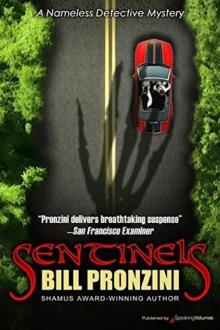 Sentinels
Sentinels The Peaceful Valley Crime Wave
The Peaceful Valley Crime Wave Hardcase
Hardcase Bleeders
Bleeders Demons
Demons The Pillars of Salt Affair
The Pillars of Salt Affair Epitaphs
Epitaphs Spook
Spook Hoodwink
Hoodwink Bug-Eyed Monsters
Bug-Eyed Monsters Endgame--A Nameless Detective Novel
Endgame--A Nameless Detective Novel The Hidden
The Hidden The Paradise Affair
The Paradise Affair Oddments
Oddments Boobytrap
Boobytrap Blue Lonesome
Blue Lonesome Scenarios - A Collection of Nameless Detective Stories
Scenarios - A Collection of Nameless Detective Stories Breakdown
Breakdown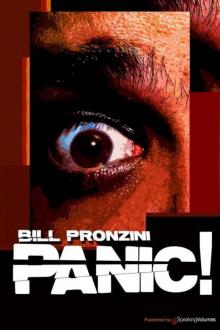 Panic!
Panic! The Bags of Tricks Affair
The Bags of Tricks Affair Quicksilver (Nameless Detective)
Quicksilver (Nameless Detective) Hellbox (Nameless Detective)
Hellbox (Nameless Detective) Nightcrawlers nd-30
Nightcrawlers nd-30 Zigzag
Zigzag The Jade Figurine
The Jade Figurine The Stolen Gold Affair
The Stolen Gold Affair The Stalker
The Stalker The Lighthouse
The Lighthouse Fever nd-33
Fever nd-33 Nightshades (Nameless Detective)
Nightshades (Nameless Detective) Scattershot nd-8
Scattershot nd-8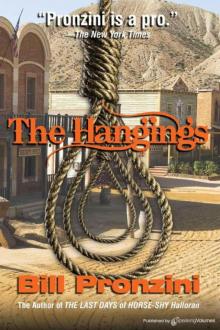 The Hangings
The Hangings Mourners: A Nameless Detective Novel (Nameless Detective Mystery)
Mourners: A Nameless Detective Novel (Nameless Detective Mystery) Graveyard Plots
Graveyard Plots Pumpkin
Pumpkin Schemers nd-34
Schemers nd-34 The Bughouse Affair q-2
The Bughouse Affair q-2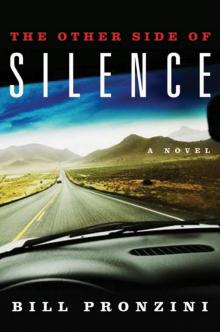 The Other Side of Silence
The Other Side of Silence Savages: A Nameless Detective Novel (Nameless Detective Novels)
Savages: A Nameless Detective Novel (Nameless Detective Novels) Crazybone
Crazybone Schemers: A Nameless Detective Novel (Nameless Detective Novels)
Schemers: A Nameless Detective Novel (Nameless Detective Novels) Gun in Cheek
Gun in Cheek In an Evil Time
In an Evil Time Son of Gun in Cheek
Son of Gun in Cheek Camouflage (Nameless Detective Mysteries)
Camouflage (Nameless Detective Mysteries)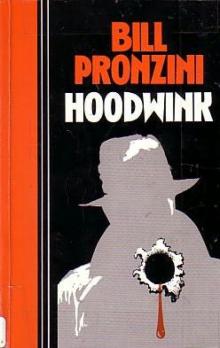 Hoodwink nd-7
Hoodwink nd-7 With an Extreme Burning
With an Extreme Burning Vixen
Vixen More Oddments
More Oddments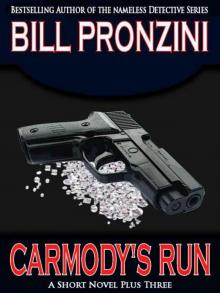 Carmody's Run
Carmody's Run Small Felonies - Fifty Mystery Short Stories
Small Felonies - Fifty Mystery Short Stories Labyrinth (The Nameless Detective)
Labyrinth (The Nameless Detective) Jackpot (Nameless Dectective)
Jackpot (Nameless Dectective) Case File - a Collection of Nameless Detective Stories
Case File - a Collection of Nameless Detective Stories Undercurrent nd-3
Undercurrent nd-3 Betrayers (Nameless Detective Novels)
Betrayers (Nameless Detective Novels) Deadfall (Nameless Detective)
Deadfall (Nameless Detective) Bones nd-14
Bones nd-14 The Snatch nd-1
The Snatch nd-1 Bindlestiff nd-10
Bindlestiff nd-10 Blowback nd-4
Blowback nd-4 A Wasteland of Strangers
A Wasteland of Strangers Double
Double The Bags of Tricks Affair--A Carpenter and Quincannon Mystery
The Bags of Tricks Affair--A Carpenter and Quincannon Mystery Quarry
Quarry Nameless 08 Scattershot
Nameless 08 Scattershot Mourners nd-31
Mourners nd-31 The Vanished
The Vanished Savages nd-32
Savages nd-32 Quincannon jq-1
Quincannon jq-1 Hellbox nd-37
Hellbox nd-37 The Crimes of Jordan Wise
The Crimes of Jordan Wise Bones (The Nameless Detecive)
Bones (The Nameless Detecive) Nothing but the Night
Nothing but the Night Camouflage nd-36
Camouflage nd-36 Pumpkin 1doh-9
Pumpkin 1doh-9 Blowback (The Nameless Detective)
Blowback (The Nameless Detective) Give-A-Damn Jones: A Novel of the West
Give-A-Damn Jones: A Novel of the West Shackles
Shackles The Violated
The Violated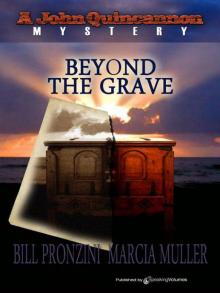 Beyond the Grave jq-2
Beyond the Grave jq-2![The Vanished - [Nameless Detective 02] Read online](http://i1.bookreadfree.com/i2/04/10/the_vanished_-_nameless_detective_02_preview.jpg) The Vanished - [Nameless Detective 02]
The Vanished - [Nameless Detective 02] Quincannon
Quincannon Undercurrent (The Nameless Detective)
Undercurrent (The Nameless Detective) Step to the Graveyard Easy
Step to the Graveyard Easy Nightcrawlers: A Nameless Detective Novel (Nameless Detective Mystery)
Nightcrawlers: A Nameless Detective Novel (Nameless Detective Mystery) The Eye: A Novel of Suspense
The Eye: A Novel of Suspense Betrayers nd-35
Betrayers nd-35 Quicksilver nd-11
Quicksilver nd-11 Acts of Mercy
Acts of Mercy Breakdown nd-18
Breakdown nd-18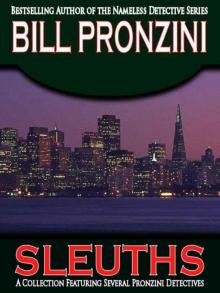 Sleuths
Sleuths![The Snatch - [Nameless Detective 01] Read online](http://i1.bookreadfree.com/i2/04/07/the_snatch_-_nameless_detective_01_preview.jpg) The Snatch - [Nameless Detective 01]
The Snatch - [Nameless Detective 01] Scenarios nd-29
Scenarios nd-29 Nightshades nd-12
Nightshades nd-12 Snowbound
Snowbound Deadfall nd-15
Deadfall nd-15 Bindlestiff (The Nameless Detective)
Bindlestiff (The Nameless Detective) Fever: A Nameless Detective Novel (Nameless Detective Novels)
Fever: A Nameless Detective Novel (Nameless Detective Novels)